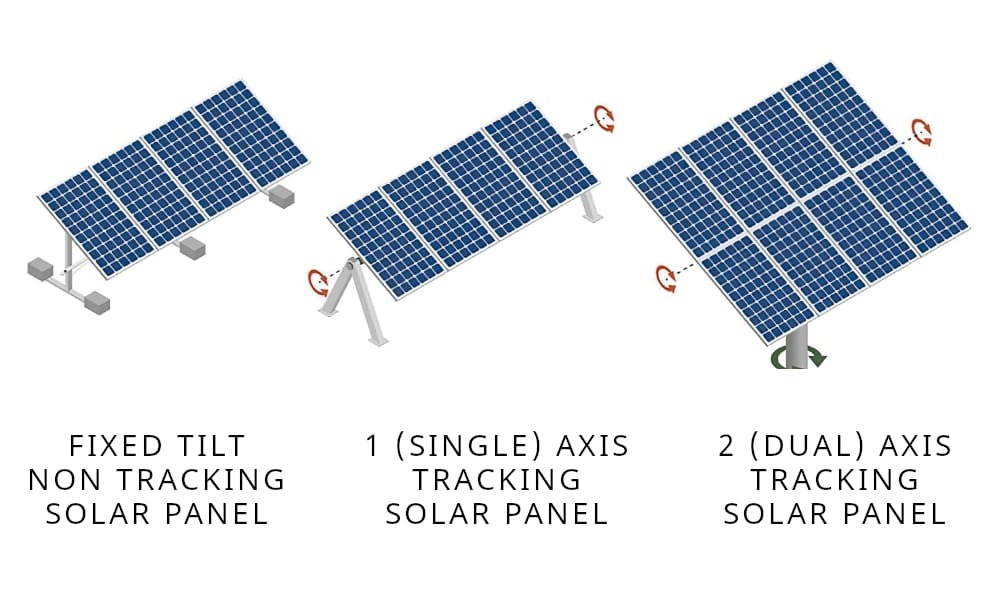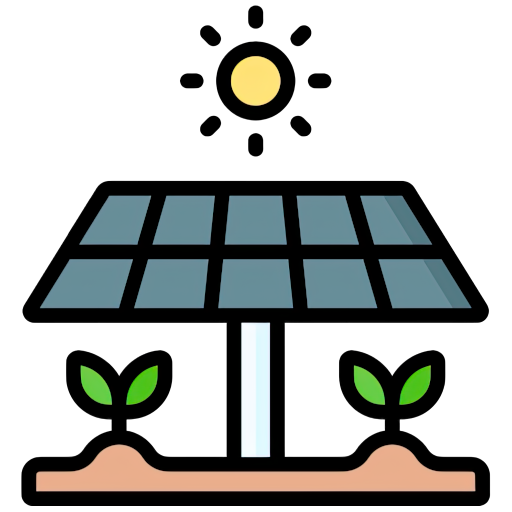The three basic types of solar panel mounting are outlined below.
Each is included below along with a brief description of what makes it special.
The following are the top three solar panel mounting types:
1. Fixed Tilt Non-Tracking Solar Panel Mounting
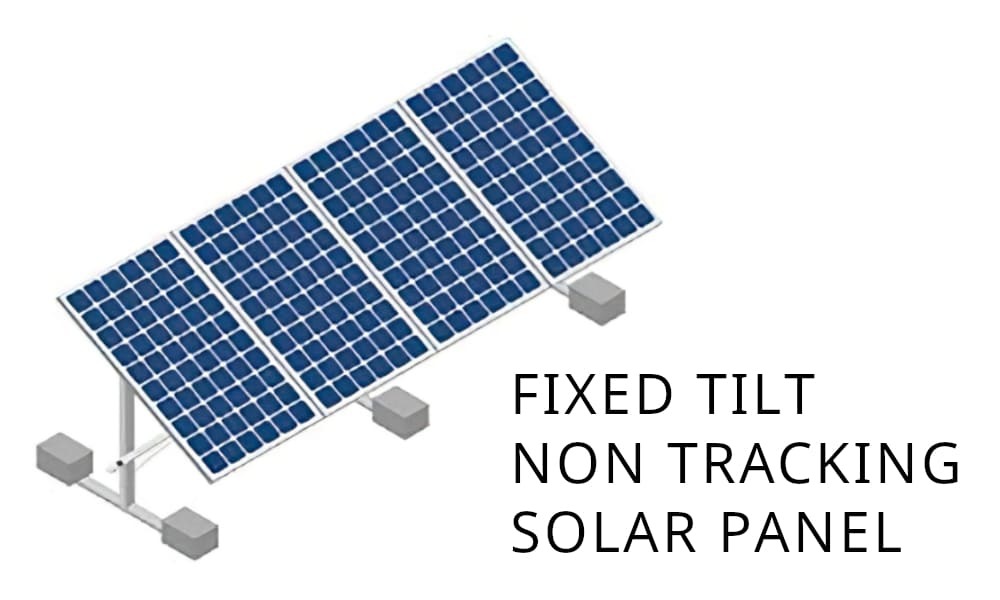
SPECIFICS:
- The solar panel should face the southern sky in the northern hemisphere.
- The tilt of the panel ought to correspond to the location’s latitude.
- The sun is not tracked by this solar panel. To increase effectiveness, the tilt can be altered each season.
The fixed-tilt solar panel mount can’t move mechanically on its own because it isn’t tracking.
Once it is installed, the panel will remain pointed in the same direction unless you manually move it. You should position a Fixed Tilt solar panel’s face to get as much year-round sun exposure as you can while utilizing one.
The fixed tilt non-tracking solar panel mount, as seen below, is the easiest and most reasonably priced solar panel mount.
Typically facing south at an angle appropriate to the latitude of the panel’s placement, this type of mount is set in place, and does not follow the passage of the sun throughout the day.
Why does it have to face the southern sky when you are in the Northern Hemisphere? because of the tilt of the earth.
Due to the earth’s 23.5-degree tilt, the angle of the sun at midday will only be directly above you if you are close to the equator; the farther north you go, the more the sun will be angled toward the Southern Hemisphere.
Why should the tilt of a permanent mount correspond to its latitude? Because of the earth’s 23.5-degree tilt, the sun’s angle in the sky at midday during the vernal and autumnal equinox will be 90 degrees minus the location’s latitude in the Northern Hemisphere.
In the winter months of the northern hemisphere, the sun’s angle in the sky at noon will be roughly 90-latitude-23.5 degrees. Additionally, 90-latitude+23.5 degrees in the summer.
If you have no intention of ever changing the angle of your permanent mount solar panel, an angle equal to your latitude is an effective angle.
The permanent mount’s angle can also be changed if you’d like, in both the winter and the summer. To account for the higher sun angles in the summer, it is customary to raise it by up to 15 degrees.
In the winter, when the sun is lower in the sky and farther away from the southern horizon, you might also lower it. You can therefore lower it by up to 15 degrees.
The tilt should ideally be 15 degrees your latitude in the summer and 15 degrees your latitude in the winter for maximum effectiveness. The tilt can be adjusted manually as often as you’d like for more efficiency, although a fixed tilt mount is hardly ever altered.
2. Single Axis (1 Axis) Tracking Solar Panel Mounting
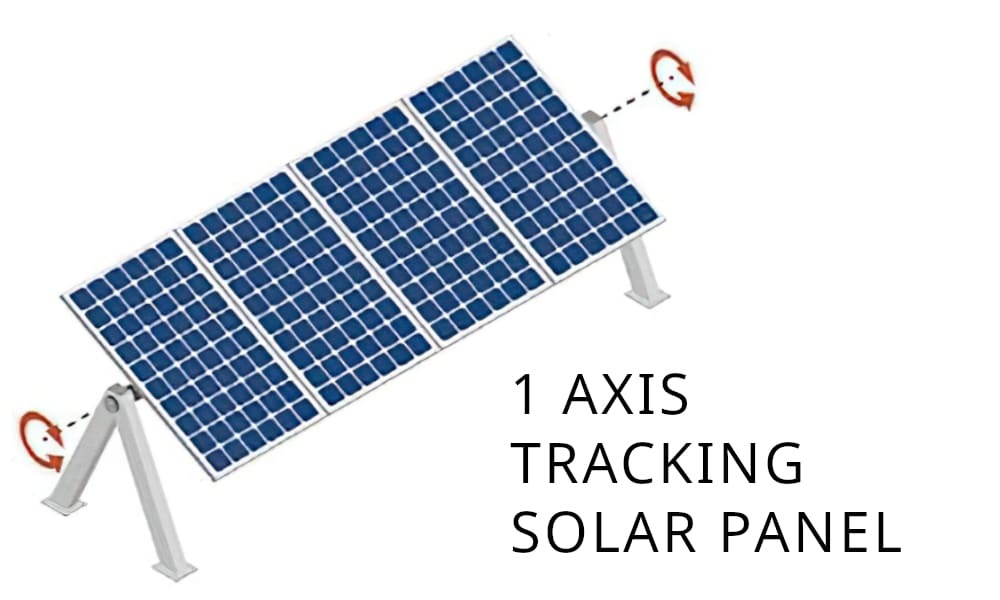
SPECIFICS:
- The Solar Panel should face the Southern Sky in the Northern Hemisphere. The North/South axis is where the rotating axis is located.
- From the East in the morning to the West at night, the axis of rotation follows the path of the sun in the sky.
- The TILT of the panel should match the geographic location’s latitude.
- For increased effectiveness, the tilt can be altered each season.
The 1-Axis mounts’ mechanical components allow for some tracking and movement automation. In general, this is more expensive than a panel with a set tilt. As suggested by its name, the 1-Axis Solar Panel can move on 1-Axis to follow the sun’s path throughout the day.
One of the three most common solar panel installations, a 1-Axis tracking solar panel rotates on a north-south axis.
To account for the setting sun, the panel will be mechanically able to change its orientation throughout the day to face the Eastern horizon in the morning, the sky in the middle of the day, and the Western horizon in the afternoon.
While tracking across the sky during the day, the tracker will face East toward the sun in the morning and West toward the sun in the evening.
The North/South axis angle of the solar panel will be fixed (until manually adjusted). Your panel should still be oriented so that it is equivalent to a latitude.
The angle can be manually adjusted to be higher in the summer and lower in the winter to more accurately match the position of the sun throughout the year. The angle can typically change by up to 15 degrees in the summer and up to 15 degrees in the winter.
This tracking panel is superior to a permanent mount since it rotates daily to follow the sun across the sky. However, as one might expect, the 2-Axis mount is more efficient than the 1-Axis mount.
3. Dual Axis (2 Axis) Tracking Solar Panel Mounting
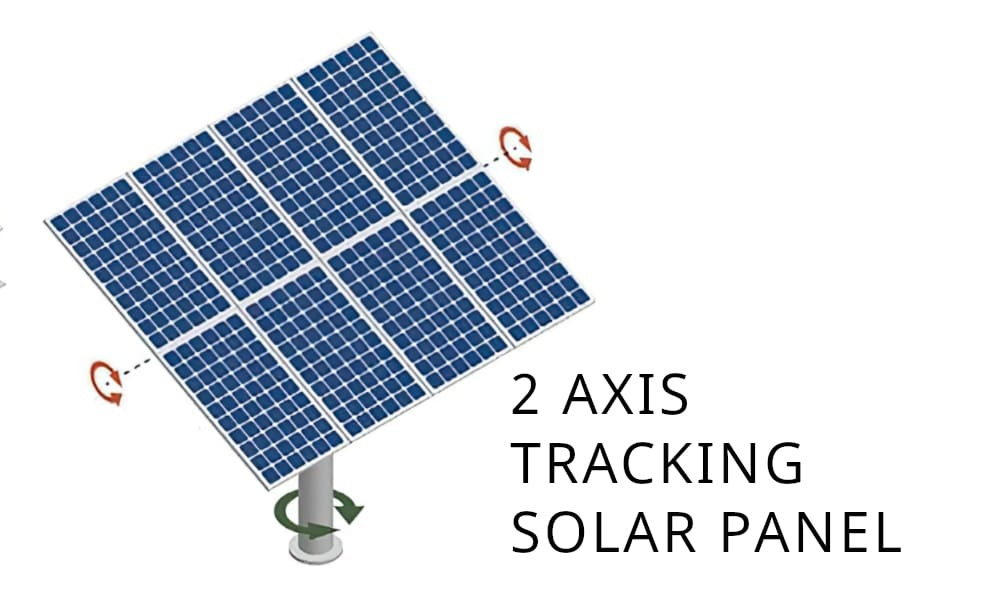
SPECIFICS:
- The Solar Panel should face the Southern Sky in the Northern Hemisphere. The North/South axis is where the rotating axis is located.
- From the East in the morning to the West at night, the axis of rotation follows the path of the sun in the sky.
- The TILT of the panel should match the geographic location’s latitude.
- For increased effectiveness, the tilt can be altered each season.
The most mechanical movement is possible by the more expensive 2-axis solar mounts. Living true to their name, they can move on both the X and Y axes and may thus follow the sun’s course throughout the day and year.
One of the three most common solar panel installations is a 2-axis tracking solar panel because it can theoretically track the sun wherever it is in the sky.
This functionality is provided by the mechanical tilt and direction shifting of the solar panel.
A 2-Axis panel will start to face more east in the morning and west in the evening as the sun moves through the day and year. In addition, it will move with the sun into the southern skies in the northern hemisphere during the winter, while during the summer it will be at a larger inclination.
This is the most efficient way to increase efficiency when it comes to tracking mounting panels.
It is more expensive because it has two axes of rotation, but it is also considerably more efficient and has longer peak solar hours.


